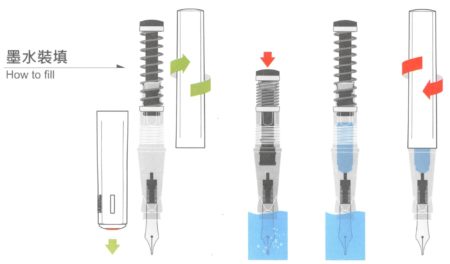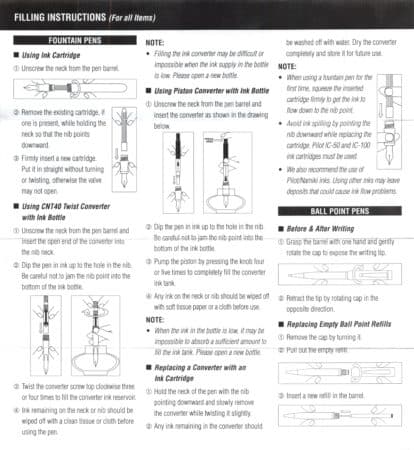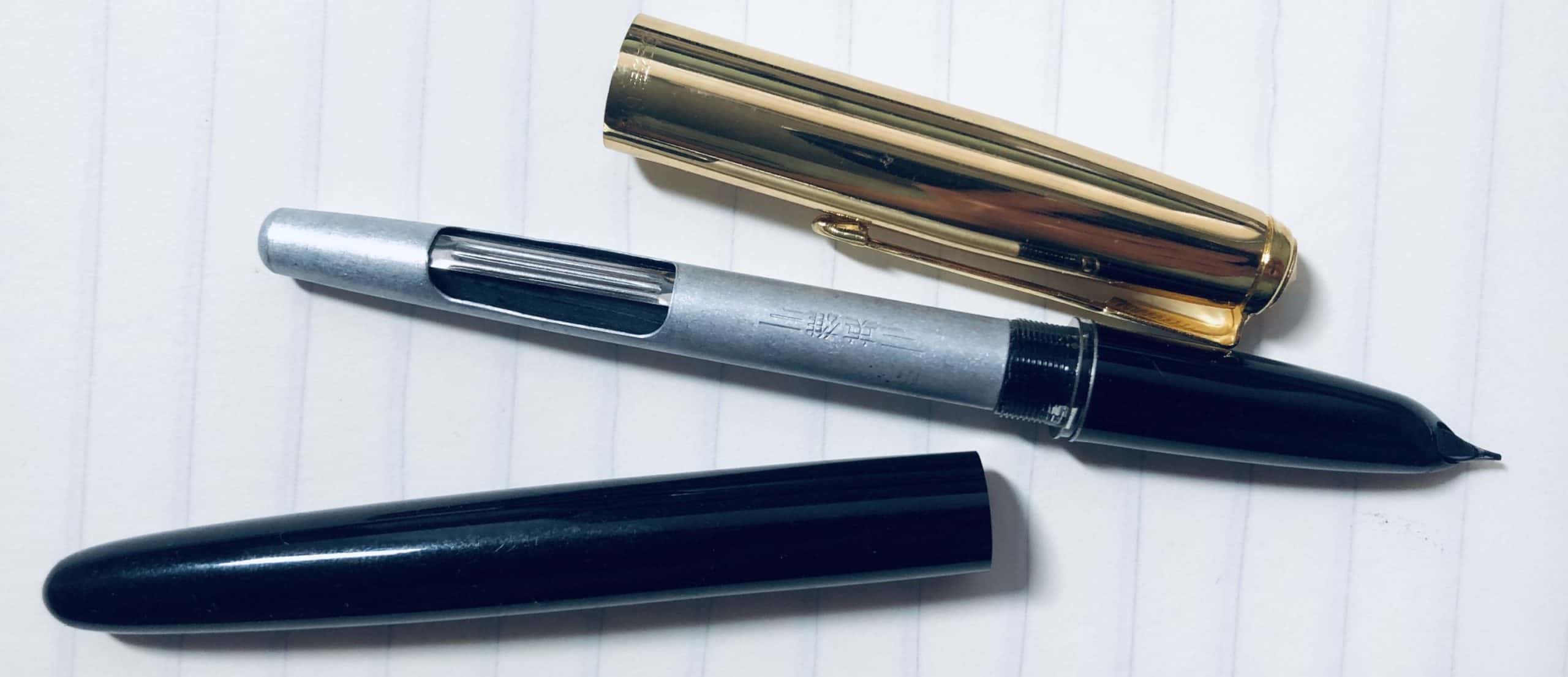Fountain pens tend to seem relatively simple, but that doesn’t mean the correct process for filling every pen is obvious. This article will explain how to fill any common fountain pen.
If you want to understand the different types of fountain pen filling systems, check out our guide. Once you’ve identified your fountain pen type, then you can return here and see how to fill it.
Guidelines For All Fountain Pens
Despite all the different types of fountain pen filling mechanisms, there are some rules that always apply.
One important rule is to fully submerge the pen nib when filling it. Fountain pens have a nib and a breather hole — the latter of which isn’t usually very obvious when looking at the pen — but it’s where most of the ink will enter some pens when filling them. As a result, a pen won’t fill unless both of these things are fully submerged in your ink bottle.
Second, most pen mechanisms benefit from repeated action. So if you use your fountain pen piston to draw in ink and you fill the reservoir to 50% you should repeat the process. This will normally get you another 10-20% of the way filled.
Last, no fill mechanism is perfect. Most of these will easily fill 50% of the way, and with proper technique get to 75%, but few of them will ever past the 90% fill mark.
Piston Fountain Pens
A piston-filling fountain pen has a piston — just like in a car — inside the barrel. This piston goes down to expel air or ink and then back up, pulling ink into the barrel. Examples of this can be found in a Lamy Safari with a converter.
The typical process is very simple, assuming the pen is clean and dry:
- Separate the grip and body of the pen.
- Submerge the nib, ideally up to the lower grip
- Push the piston down, expelling any air in the barrel. (This is normally done by twisting the top piece)
- Turn the barrel and pull in the ink
- Turn the piston to its open-most point, lock if possible
- Repeat 2x for maximum fill
Twsbi Eco Instructions

Like most piston-fillers the Twsbi Eco has a knob on the top that turns to have the piston go up or down.
Twsbi Go Instructions

The Twsbi Go has a piston-filler that is spring-loaded, instead of twisting to go up and down. It’s fundamentally the same concept, but the push-button spring mechanism gives you less fine control of the fill.
Cartridge-Converters
A cartridge-converter is a fountain pen that takes a cartridge or a fountain pen converter, like Pilot Metropolitan and its CON-40. A converter is an optional device that attaches to a fountain pen, bringing the filling mechanism with it. The mechanism can be a piston, a squeeze sac, or any other number of fill types.
Pilot Metropolitan

The Pilot Metropolitan is a cartridge-converter fountain pen that usually uses Pilot’s disposable cartridges.
Working with a fountain pen cartridge is very easy. You simply open the pen, then get the cartridge and push it into the little stem on the inside of the fountain pen (at the top of the grip piece). There will be a firm “pop” and you’ll notice that the cartridge is firmly stuck onto the grip piece, with no wiggle. The ink will start flowing and soon the pen will be writing.
The number one thing to keep in mind is that not all fountain pens and cartridges are compatible. This fountain pen cartridge guide will help!
If you opt for a converter, then you simply open the pen, then get the converter and push it into the pen firmly. Just like with a cartridge you’ll need to make sure the pen and converter are compatible!
Since there are all sorts of converters, you’ll have to figure out the type you have (or even the specific model) before you know how to fill in. Here are some popular options:
Aerometric
An aerometric filler is a rubber sac. Using it is very simple: open the pen, submerge the nib and breather hole, squeeze the sac or spring around the sac expelling the air inside, and then let go, all the rubber to go back into its original shape and pulling in ink.
A rubber sac or aerometric filler is the simplest mechanism in any fountain pen, short of an eyedropper — which has no mechanism at all! This method was very popular, having been found on pens like the Parker 51 and Aurora Hastil, but isn’t as popular these days.
Vacuum Filler
Vacuum-filling fountain pens might seem like magic, but they are very simple to use in practice. You simply need to:
- unscrew the top of the pen
- pull the top of the pen out all the way
- submerge the nib and breather hole entirely
- push the top of the pen down until there is a pop sounds or similar break in pressure
- you will see the ink flowing in the pen and up the barrel as the vacuum area you created by pushing the top down is filled with ink
Note: This article is a work in progress and will expand as we get access to more pen documentation! Feel free to email if you have any you’d like to share.
